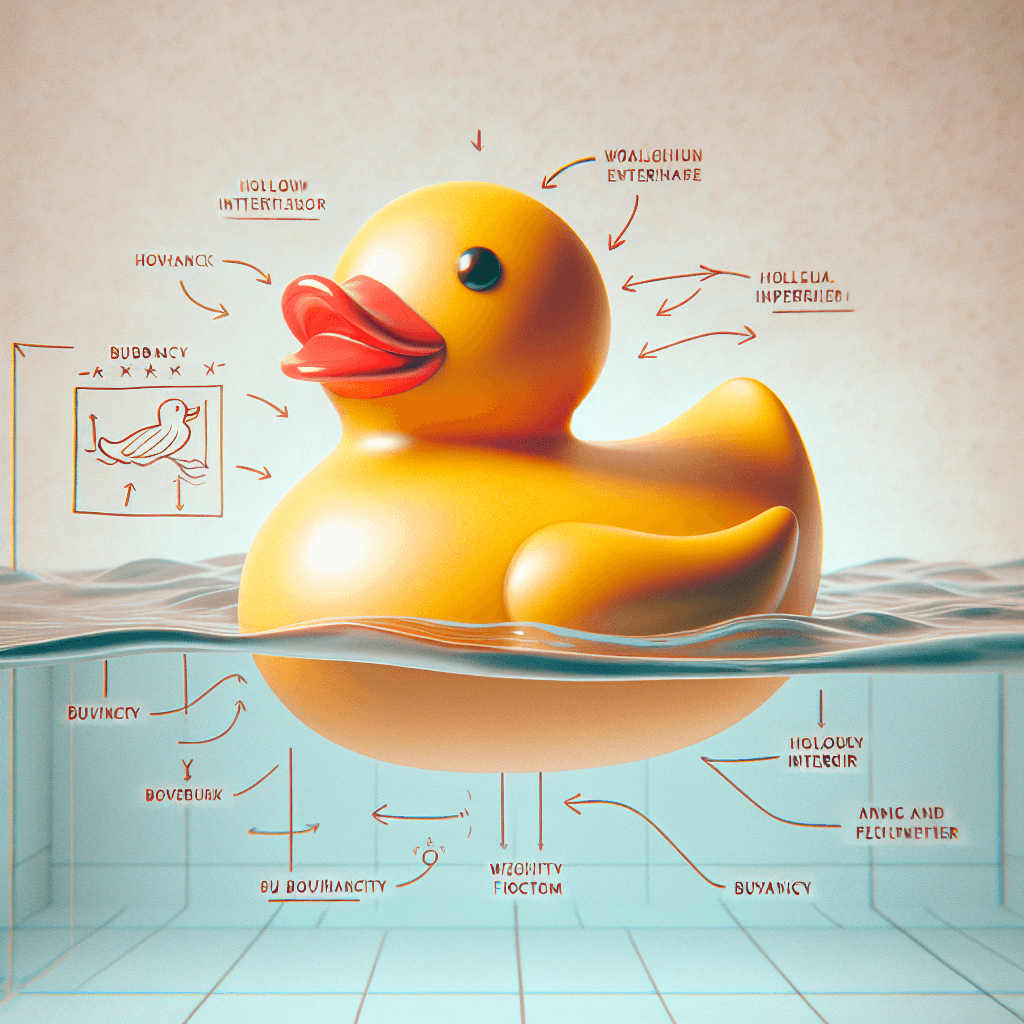Unsinkable Smiles: What Makes Rubber Ducks Always Float Perfectly Upright
Ever wondered why your rubber duck always bobs perfectly upright? It's not luck, but a clever application of physics and design that ensures their reliable stability.


Too Long; Didn't Read
Rubber ducks are designed to float upright. Their stability comes from the principles of physics, ensuring they self-right in the water, not from random chance.
Unsinkable Smiles: What Makes Rubber Ducks Always Float Perfectly Upright?
Ever watched a cheerful yellow rubber duck bobbing perfectly upright in the bath, seemingly defying the random tumbles you might expect? It's a classic image, almost universally recognized. But have you ever stopped to wonder why these bath time companions are so reliably stable? It's not just luck; it's a clever application of physics and design. This post dives into the science behind what makes rubber ducks always float perfectly upright in water, revealing the engineering hidden within this simple toy.
Buoyancy: The First Piece of the Puzzle
Before we get into the upright stability, let's cover the basics: why does a rubber duck float at all? The answer lies in buoyancy.
- Archimedes' Principle: This fundamental principle states that an object submerged in a fluid (like water) experiences an upward buoyant force equal to the weight of the fluid it displaces.
- Density Matters: For an object to float, the buoyant force must be equal to or greater than the object's weight. Rubber ducks are typically made from vinyl or similar plastics and are hollow. This means their overall average density (mass divided by volume) is much lower than the density of water. They displace a weight of water greater than their own weight, allowing them to float easily.
So, being hollow and made of lightweight material ensures the duck floats, but it doesn't automatically guarantee it stays upright.
The Stability Secret: Center of Gravity Meets Center of Buoyancy
The real magic behind the rubber duck's upright posture lies in the interplay between two critical points: the Center of Gravity (CG) and the Center of Buoyancy (CB).
- Center of Gravity (CG): This is the average location of the object's weight. Imagine balancing the duck on your fingertip – the point where it balances is roughly its CG.
- Center of Buoyancy (CB): This is the geometric center of the volume of water displaced by the duck's submerged part. It's the point where the upward buoyant force effectively acts.
For an object to float stably in a specific orientation (like upright), its design must ensure that if it tilts, forces naturally push it back to that stable position. This is achieved by carefully positioning the CG and CB.
Designing for Upright Floating
Rubber duck manufacturers employ specific design strategies to ensure stability:
Lowering the Center of Gravity
The key trick is to make the Center of Gravity (CG) as low as possible within the duck. This is often achieved by:
- Adding Weight: Many rubber ducks have a weight (often a small metal piece) sealed into their base or have significantly thicker plastic at the bottom. This concentrates the mass low down, effectively lowering the overall CG.
- Shape: While the duck shape is iconic, the generally broader base compared to the head also contributes to keeping the weight lower.
How Low CG Creates Stability
When the duck is floating upright, its low CG is directly below its Center of Buoyancy (CB). Now, imagine the duck gets tilted slightly:
- The CG (the point where weight acts downwards) stays in the same place relative to the duck's structure.
- The CB (the point where buoyancy acts upwards) shifts. Because the shape of the submerged part changes when tilted, the geometric center of that submerged volume moves towards the side that is more deeply submerged.
- This creates a restoring moment (or torque). The upward buoyant force (acting through the new CB) and the downward force of gravity (acting through the fixed CG) are no longer aligned vertically. They form a pair of forces that rotate the duck back to its upright, stable position where the CG is again directly below the CB.
Think of it like a weeble wobble toy – weighted at the bottom, it always rights itself. The rubber duck uses the same principle, just with buoyancy providing the upward force instead of a solid surface.
Not Always Perfect: The Exception Proves the Rule
While most classic rubber ducks are designed for stability, you might occasionally encounter very cheaply made ones that list to the side or even capsize easily. These often lack proper weighting or consistent material thickness at the base, resulting in a higher CG that makes them less stable. Their tendency to tip over highlights just how important that intentional low CG design is for the classic upright float.
Conclusion: Simple Toy, Smart Physics
So, what makes rubber ducks always float perfectly upright? It's a delightful combination of basic buoyancy and clever engineering. Being hollow and made of lightweight material ensures they float, but the critical element is the intentionally low Center of Gravity, achieved through weighting or thicker material at the base. This ensures that whenever the duck tilts, the forces of gravity and buoyancy work together to create a restoring torque, pushing it back to its stable, upright position. The next time you see a rubber duck serenely floating, you can appreciate the simple yet effective physics that keeps its smile facing upwards. It’s a small marvel of design bobbing in the bathwater.


